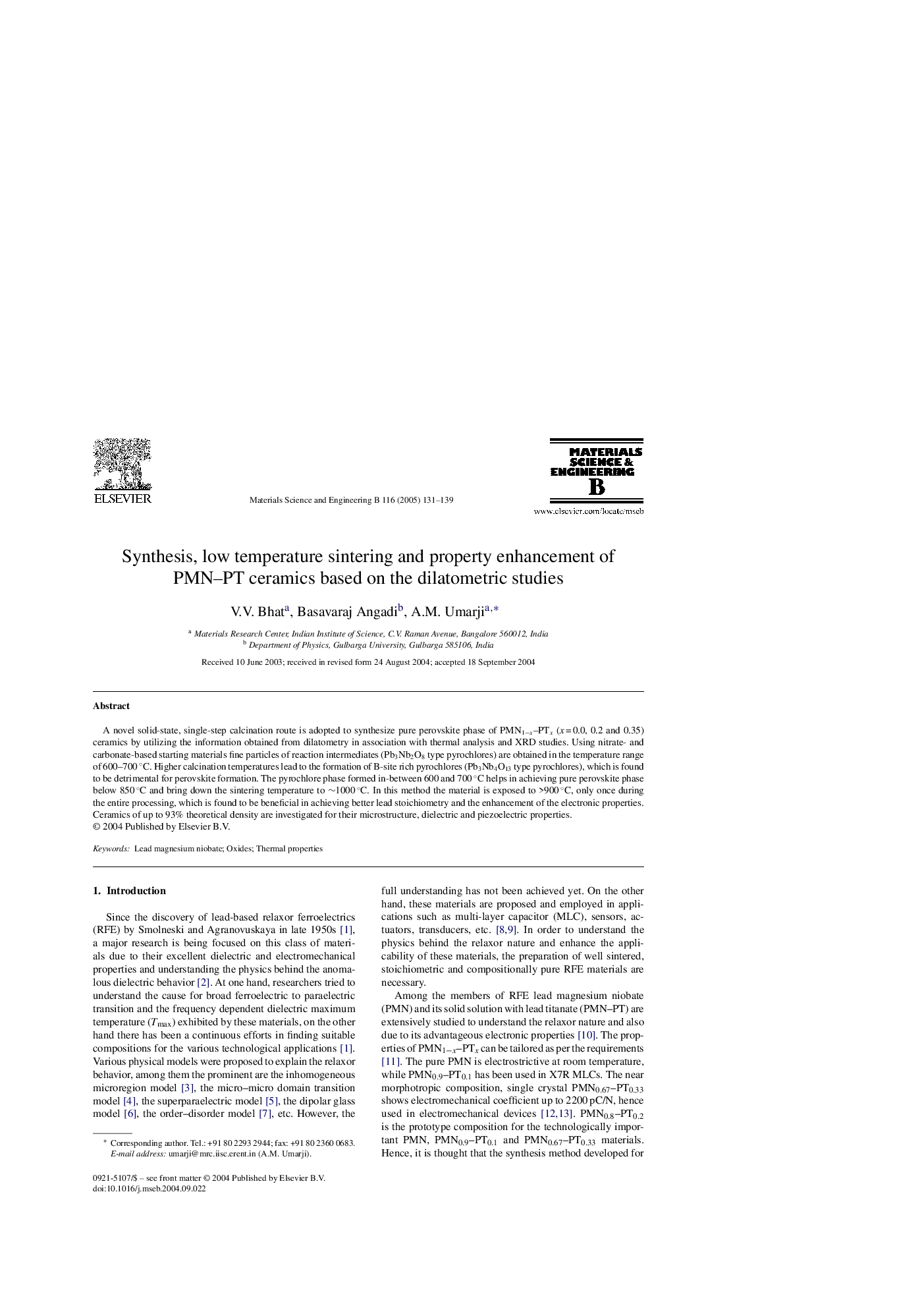| Article ID | Journal | Published Year | Pages | File Type |
|---|---|---|---|---|
| 10640164 | Materials Science and Engineering: B | 2005 | 9 Pages |
Abstract
A novel solid-state, single-step calcination route is adopted to synthesize pure perovskite phase of PMN1âx-PTx (x = 0.0, 0.2 and 0.35) ceramics by utilizing the information obtained from dilatometry in association with thermal analysis and XRD studies. Using nitrate- and carbonate-based starting materials fine particles of reaction intermediates (Pb3Nb2O8 type pyrochlores) are obtained in the temperature range of 600-700 °C. Higher calcination temperatures lead to the formation of B-site rich pyrochlores (Pb3Nb4O13 type pyrochlores), which is found to be detrimental for perovskite formation. The pyrochlore phase formed in-between 600 and 700 °C helps in achieving pure perovskite phase below 850 °C and bring down the sintering temperature to â¼1000 °C. In this method the material is exposed to >900 °C, only once during the entire processing, which is found to be beneficial in achieving better lead stoichiometry and the enhancement of the electronic properties. Ceramics of up to 93% theoretical density are investigated for their microstructure, dielectric and piezoelectric properties.
Related Topics
Physical Sciences and Engineering
Materials Science
Electronic, Optical and Magnetic Materials
Authors
V.V. Bhat, Basavaraj Angadi, A.M. Umarji,
